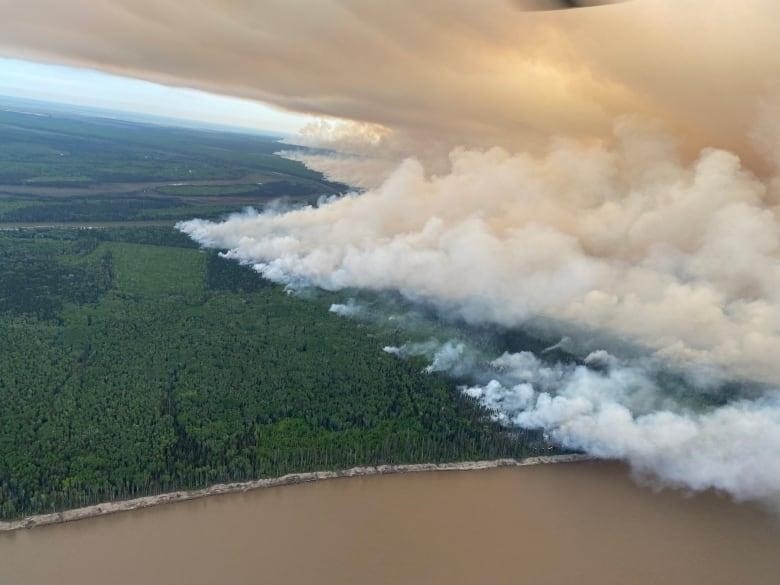
Alberta sets aside $175 million to pay for evacuation centers, transportation, and some damage to property
After wildfires in the spring and early summer destroyed parts of Alberta and forced 38,000 people to leave their homes, the government has set aside $175 million to help people get back on their feet.
Municipalities and Métis settlements will be able to apply for provincial funding to help pay for some of the unexpected costs of fighting wildfires and fixing some damage.
“Alberta municipalities and Métis settlements have had to deal with extraordinary costs and pressures to help keep residents’ homes and businesses safe,” Public Safety and Emergency Services Minister Mike Ellis said at a news conference on Tuesday in Drayton Valley, 140 kilometers southwest of Edmonton. We are here to help carry this load.
A government news release said that municipalities and settlements can use the recovery money to pay volunteer firefighters, municipal staff, and firefighter costs. They can also use the money to run reception centers and offer emergency housing, food, and transportation.
It could also pay for steps taken to protect buildings from fires and fix or replace infrastructure damaged by efforts to prevent fires.
Since the government changed the program in 2021, however, recovery funds will only cover 90% of the costs for communities.
Also, the program will only pay for repairs that are not covered by insurance.
The disaster response program does not help homeowners, renters, small business owners, landlords, farms, non-profit groups, or condo associations. The government says that these groups should be able to get fire insurance on their own.
People who live in some Métis settlements in Alberta say they don’t know how they’ll rebuild their homes because insurance companies won’t cover them.
A wildfire in May destroyed 27 buildings in the East Prairie Métis Settlement, which is about 380 km northwest of Edmonton. Home insurance was not given to the settlement because the houses were too far away from the nearest fire station.
Ellis said that the provincial government knows about the problem but doesn’t have a solution yet.
He said, “We’re going to do whatever it takes to try to help any community.” “All I can say is that those talks are happening right now.”

Officials in Alberta said that 2023 has been an unusually bad year for natural disasters, with wildfires in May, rain that caused flash flooding, and a tornado in Didsbury on Saturday.
Ric McIver, the Minister of Municipal Affairs, said that so far, the province has spent more than $700.000.000 fighting wildfires.
Stephen LaCroix, the managing director of the Alberta Emergency Management Agency, said there are still 106 active wildfires in the province, and the season isn’t over yet.
The costs of fighting fires this year could be higher than they were in 2016, when firefighters spent months putting out fires near Fort McMurray.
This year, by the middle of June, wildfires in Alberta had burned over 1.4 million hectares, which is the most ever measured.
So far this year, there have been 789 fires. LaCroix said that 52 communities have been affected by these fires.
Property taxes could go up if costs aren’t covered
When he sees numbers like these, Big Lakes County’s chief administrative officer, Jerry Gautreau, starts to wonder if the $175 million set aside for disaster recovery will be enough.
Gautreau said, “I think that number will be a lot bigger.”
Even though the bills keep coming in, Gautreau says that his county in northwest Alberta could spend between $4 and $5 million on firefighting, building fire breaks, running a reception center, and housing people who had to leave their homes.
He said that since municipalities can’t have a deficit, the county will have to raise fees or tax rates to pay for any costs that the province doesn’t cover.
Just the costs of fighting fires and cleaning up after wildfires could add up to close to $900 million, which is about a quarter of the province’s budget for the fiscal year 2023–24. The budget for this year has set aside $1.5 billion for responding to disasters.
Minister of Municipal Affairs McIver said it’s too early to say if the government needs to look at that budget line again.
Ellis, who is also the deputy premier, said that the government’s top priority is to protect lives and property; they’ll worry about the bills later.
“We’ll do whatever it takes to keep Albertans safe,” said Ellis.
